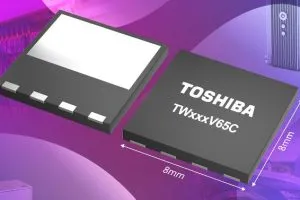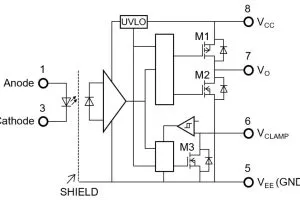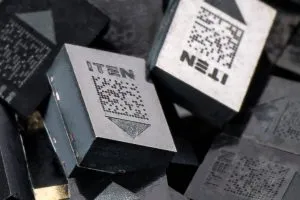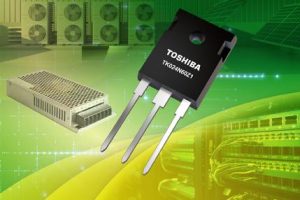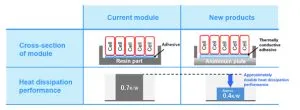
Called Type4-23 (also FM01202CCB04A), it is electrically similar to the company’s existing Type1-23 in that it is 2P12S (24 cells in two parallel 12 series arrangement) module, but the earlier versions resin baseplate has been replaced by aluminium to improve heat extraction.
“When used with the same cooling system and under typical operating conditions, heat dissipation is approximately double that of current modules, significantly extending battery life,” according to the company. “As aluminium is a[n electrical] conductor, the baseplate must be insulated from the battery cells. Toshiba has developed a novel structure that achieves the required voltage resistance, allowing commercialisation.”
Numerically, thermal resistance has dropped from 0.7 to 0.4°C/W.
The module is slightly larger that the earlier type, increasing to 204 x 395 x 135mm (without protrusions) from 190 x 361 x 125mm. Mass is 1.5kg heavier at 16.5kg.
Minimum ambient operating temperature remains -30°C, but maximum ambient has increased from -45 to + 50°C.
Maximum current, charge or discharge, is 160A continuous and 350A pulsed, with temperature and cooling system caveats. Its voltage range is 18 to 32.4V.
Built-in features include cell voltage measurement and balancing, and module temperature measurement.
The battery is expected to me available sometime in the middle of this month (April 2025). For safety in motive applications, it is intended to meet IEC 62619:2022, and it will be certified under the UL1973 safety standard for stationary applications, including off-grid and microgrid use, said Toshiba.
 Electronics Weekly
Electronics Weekly
